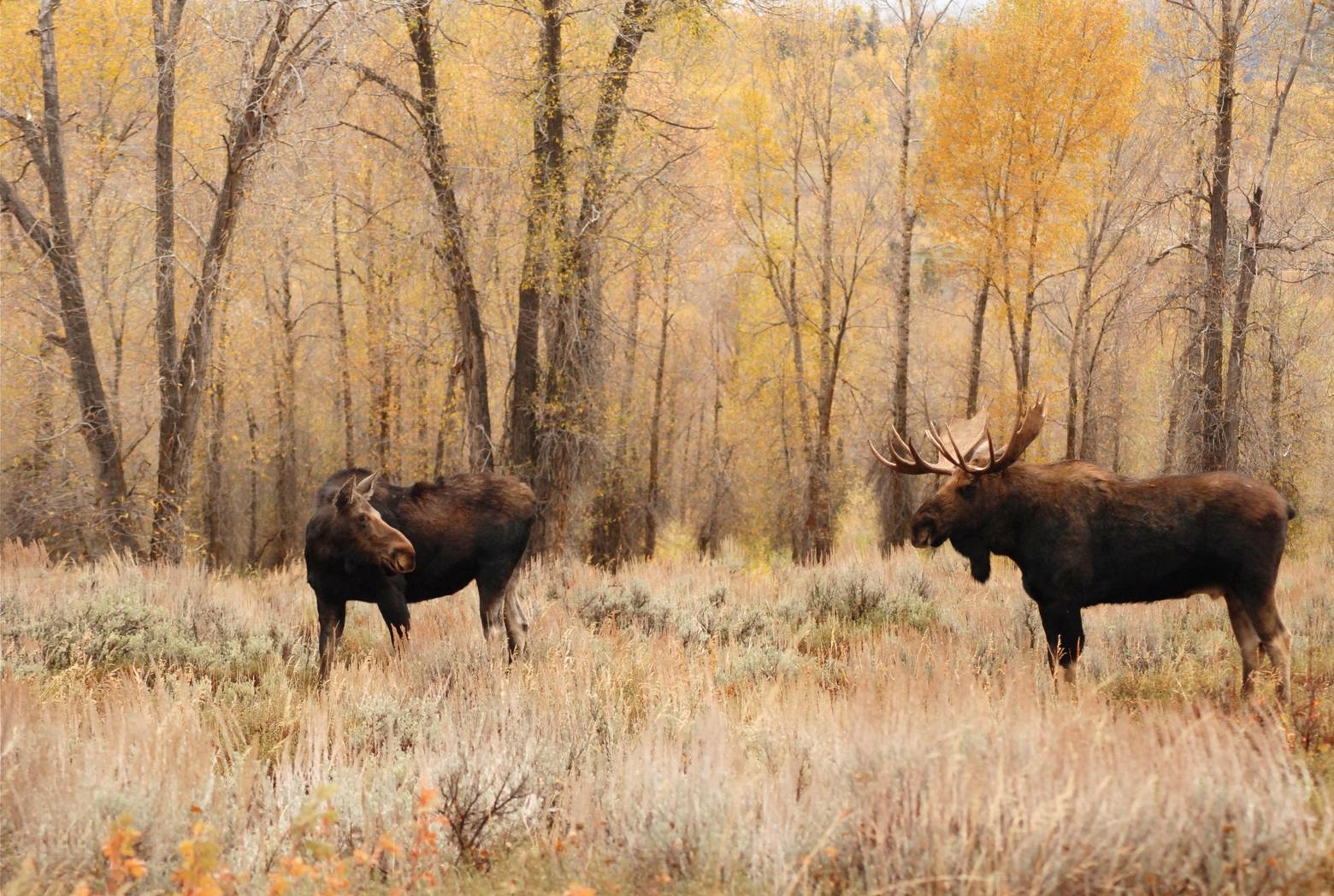Back to StoriesWyoming Moose, Cattle Test Positive for Anthrax
September 19, 2024
Wyoming Moose, Cattle Test Positive for Anthrax State Game and Fish Department confirms first case of anthrax in Wyoming wildlife in decades
by Sophie Tsairis
Wyoming wildlife officials in
early September confirmed a case of anthrax in a deceased bull moose found in
Carbon County, the first detection of the disease in wildlife since 1956. The report comes just days after the Wyoming
Livestock Board notified the Wyoming Department of Game and Fish that cattle
near Elk Mountain had tested positive for the disease.
The Wyoming State Veterinary
Laboratory confirmed anthrax in multiple beef herds in Carbon County on August
31, according to a press release from the Wyoming Livestock Board, the first confirmed
cases in Wyoming cattle since the 1970s.
Anthrax is a naturally
occurring bacterial disease that can be transmitted between livestock, wildlife
and humans, though it most commonly infects herbivores. The bacterial spores
can persist in soil for years, sometimes centuries, with sporadic outbreaks
that typically follow periods of heat and drought with subsequent heavy
rainfall, conditions prevalent in the region this summer.
The last confirmed case of the disease in wildlife in Wyoming was in 1956 in a moose found in Sublette County.
Both domestic and wild
animals can contract anthrax by inhaling or ingesting spores from contaminated
soil, vegetation or water. In livestock, symptoms of anthrax include, weakness,
stumbling, difficulty breathing, fever, bloody diarrhea and death.
Dr. Samantha Allen, state
wildlife veterinarian for Wyoming, told Mountain Journal that the
recent detection of anthrax in a moose is currently the only documented case
reported in wildlife. The last confirmed case of the disease in wildlife in
Wyoming was in 1956 in a moose found in Sublette County.
“For right now, this seems to
be pretty locally isolated to where these animals were found,” Allen said.
"We haven’t had a case in about a week now, so the risk is low, but we are
asking folks to take precautions."
The Department of Game and
Fish in
a recent statement urged hunters and the public
to avoid approaching dead wildlife or livestock. They recommend wearing gloves
when field dressing or handling harvested animals, keeping pets away from
carcasses, and reporting to the department any deceased wildlife, including a
GPS pin to mark the location.
Human exposure is rare, Allen
says, and cases of hunters contracting anthrax most often occur through
skin-to-skin contact with an animal and fluid transmission through an open
wound or cut.
Individuals can report a wildlife disease incident online or call the Game and Fish Wildlife Health Laboratory at (307)
745-5865.
__________________________________________________________________________________________________
Mountain Journal is a nonprofit, public-interest journalism organization dedicated to covering the wildlife and wild lands of Greater Yellowstone. We take pride in our work, yet to keep bold, independent journalism free, we need your support. Please donate here. Thank you.
Related Stories
January 14, 2025
Feds Look to Expand Montana’s Largest Coal Mine
The 19-million-ton expansion is estimated to extend Spring Creek Mine’s operational life by five years.
March 26, 2025
River Study Offers New Angle on Yellowstone Recreation
The Upper
Yellowstone Watershed Group report hopes to inform better management for a
cherished regional resource.
February 13, 2025
Bill Would Redraw Lines Between Wyoming Trappers, Trail Users
Lawmakers
push to give wildlife officials authority to end unrestricted trapping access on public lands.




